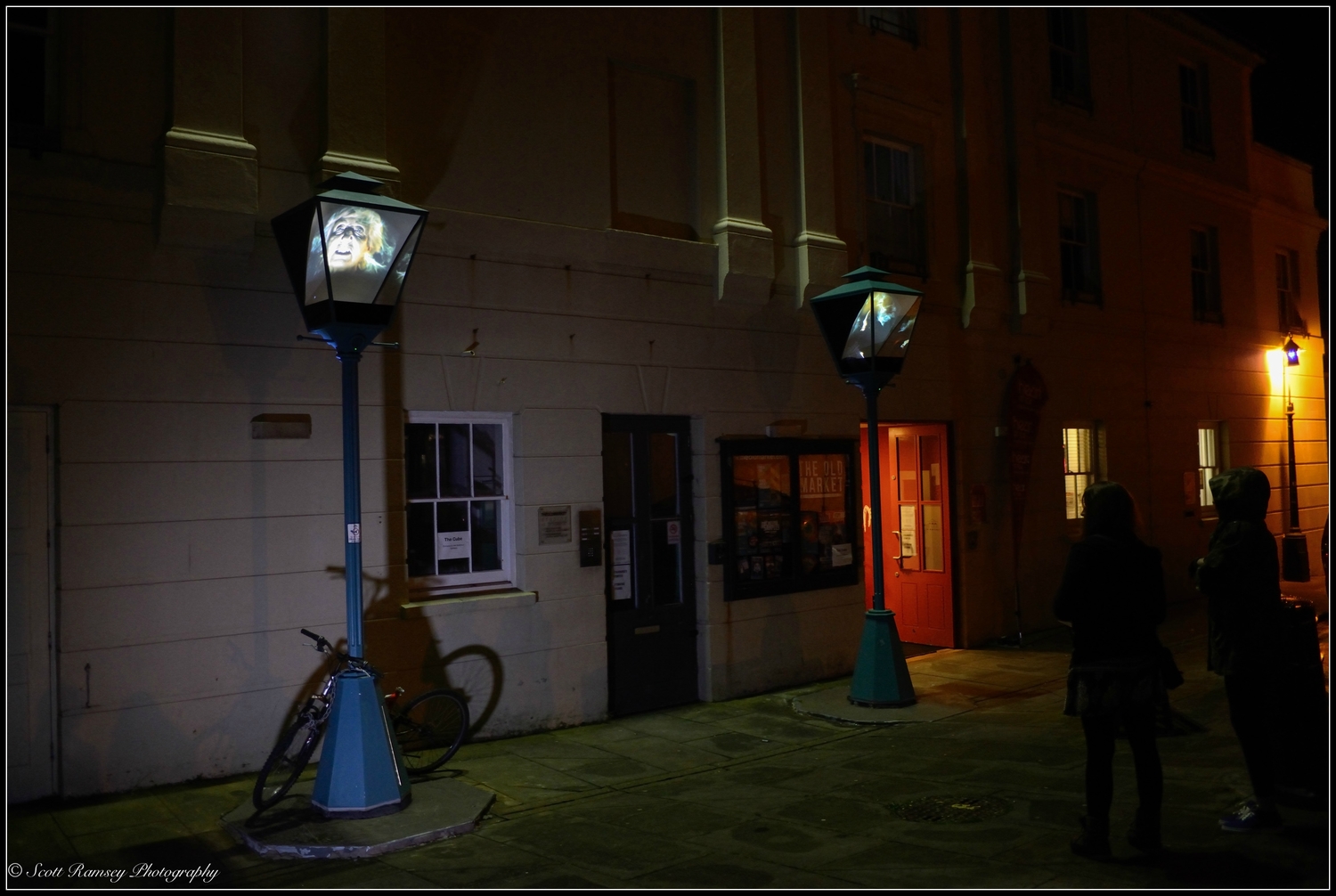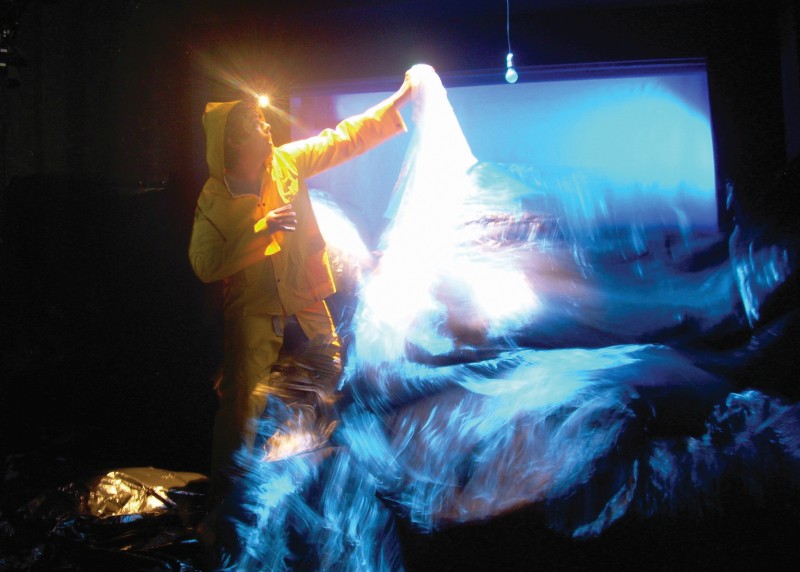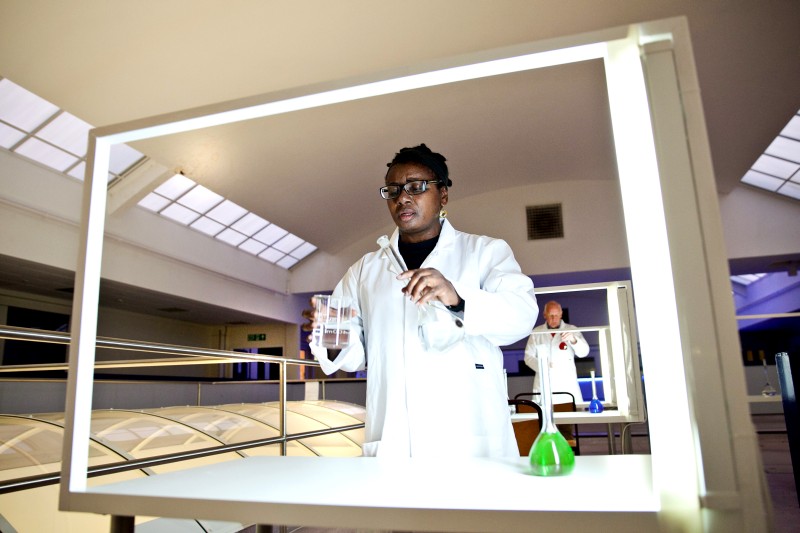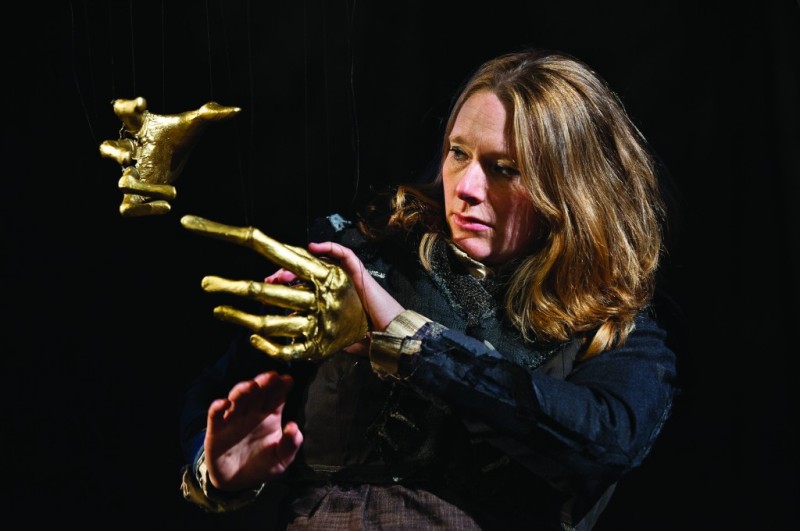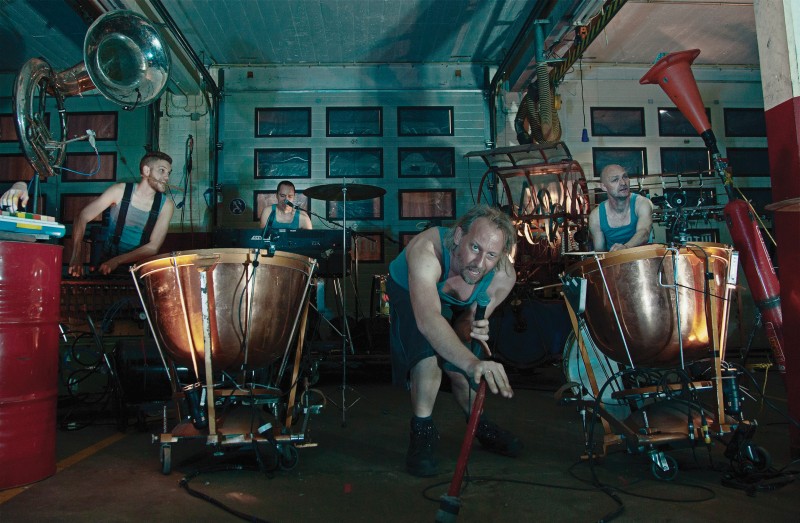The Old Market sits in a moody cul-de-sac in old Brunswick, which bridges the gap between Brighton and Hove – a splendid building illuminated by its own wall-mounted lamps, and additionally by two large lamp-posts standing proudly on the paved area in front of the building. Are they always there? They look as though they could be. They are set off-centre rather than on either side of the main door, which gives an edge of unreality, and an interesting asymmetrical air to the architecture. One of the posts has a bicycle tied to it – these are proper, solid lamp-posts which when struck produce a satisfying metal ring. But they are no ordinary posts, they are the means of transmission of a number of ghost stories, presented by an evolving series of disembodied heads seemingly trapped inside the lamp-head. As each story is told, it is augmented by sounds from the other post: booming thunder, crashing waves, howling wind, squeaking doors…
Talking Posts has been created by Brighton based multi-media / cross-artform company Shared Space and Light, who have brought to fruition a number of renowned design, film, and video-mapping projects over recent years. The design and visual arts elements of the piece are beautiful – the lamp-posts themselves, and the integration of the moving image and sound into the posts. It is a plus of the piece that the technology is harnessed in the service of the art, which is how ithings should be.
The stories are local, telling tales of all sorts of supernatural happenings, from the horribly harrowing to the mildly amusing. The Old Market itself is the subject of one them – an odd little story of horses neighing and whinnying in the basement (the building used to be a riding school, apparently). Some are from recent times, such as a story of a kindly ghost who hangs around the Sussex County Hospital at visiting times – the other-worldly visitor (seen as a sort of guardian angel loitering by the beds) sadly lost along with the old wards when the hospital is re-developed. Many conjure up a long-lost Brighton from many centuries ago, a rough and ready town populated by sailors and smugglers and serving wenches – although we recognise the names of roads in what is now called The Lanes (the original city centre). One of my favourite stories is set around the town’s parish church, St Nicolas’, and features a truly spooky and unnerving tale of a sailor lost in a fire at sea, his demise (and that of the whole ship) witnessed by his beloved, who has climbed to the top of the spire, and who then falls with shock – or perhaps jumps to her death. Every May, as the anniversary recurs, her screams of terror can apparently be heard, and if you’re very lucky, the burning ship itself can be sighted off-shore. Move on a few centuries, and we hear the story of a seafront tea-room in which the waitresses serving the scones and jam repeatedly trip over some unseen obstacle in the room. Haunted homes and hotel rooms naturally crop up a few times – a story of a typewriter that clatters along all by itself is very lovely; and the tale of a child who feels the hands of death around his throat is truly frightening.
These classic tales have been reworked into first-person narratives by playwright Sara Clifford, who has done an excellent job, giving enough shared style to offer cohesion to the whole piece, whilst yet allowing for individual narrative voices to shine through. The actors include Brighton luminaries Ivan Fabrega, Merry Colchester, and Darren East (who tells the tale of the tripping waitresses with a cheeky ladies-man raise of the eyebrows), through to veteran TV actress Shirley Jaffe (who brings her wealth of experience to the job). Some of the team of thirteen (of course!) storytellers in this hour-long cycle of tales have evidently more experience than others in delivery to-camera. Some seem to be natural storytellers, whilst others are a little too actorly. In some stories, cuts (where we presume the text hadn’t been delivered in one take) are a slightly awkward distraction. It is unclear if a director has been employed – some of the actors look as if they could have done with a little more time and direction – and if there is an opportunity for more artistic development on the piece, it would be great to have time allocated for further rehearsals and re-recordings.
Talking Posts, though, is a success – a very lovely concept, well realised. A shivery, shadowy experience perfect for melancholic autumn evenings.
Talking Posts was commissioned by The Old Market as part of their Industrious Creatives programme (funded by ACE) and presented as part of Brighton Digital Festival. Photo by Scott Ramsey.

